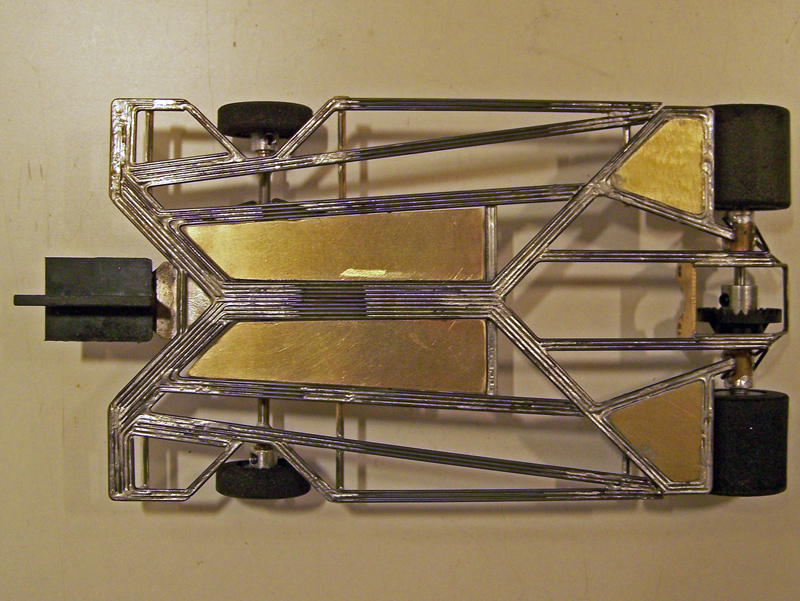Gentlemen,
I didn’t have the time Friday evening before going into work at the hospital to fully address the impact of the regulation change here. Now that it is Monday morning, and my “work week” is over, please allow me the opportunity to do so.
First off, thanks guys for your time, considerations, and effort for what is largely a thankless job with real lousy pay. More often than not the attempts at modifying regulations is a case of closing the barn door after the cows have gotten out… it’s just a question of how long the dang door was open, how many bovines escaped, and which ones you can keep fenced in…
I very much appreciate the definition of the chassis front. Makes things a whole lot clearer.
As a sidebar, you may want to give some consideration as to whether the “motor bracket” also includes the rear axle tube (when used), as there will be cases when some of the main rail wires attach to the rear axle tube directly but not directly to the motor bracket. Thanks in advance.
The whole “spirit” for scratchbuilt chassis classes has to somehow include a balance somewhere compatible to the crazed die-hard builders and the less fanatical kit assemblers. The importance of kits and manufactured chassis sections/components to the hobby is significant, as the bulk of builders will fall into this area of construction. At the same time, while keeping in the “spirit”, these kits and components have to be regulated to some extent so as not to allow the creation of a manufactured “brass flexi” class of chassis, as exampled by rules that govern the size of some chassis components.
I have built a lot of all-wire chassis over the years, and have gained a lot of experience now using the smaller 0.039” and 0.032” wire to construct them. Lateral loading on the chassis frame, much less vertical loading, when under running conditions becomes a matter of greater consideration as the wire being used gets smaller. One of the ways I’ve learned to address this is by using shorter spans within any given component structure for smaller wire. Another method is to use angled structures that create a stronger component. This is a large reason why you’ll notice many of my chassis have triangulated framing structures, and largely deviate from running parallel with the chassis centerline. In this way I’ve been able to build 0.039” and 0.032” wire framed chassis with minimal numbers of adjacent wires within any single structural component.
And thus we come to my conundrum with the stated change in the rules stated at the beginning of this thread. I started designing and building all 0.039” and 0.032” wire chassis back in early 2013, so there been a few chassis in that time. The requirement of 3x minimum per side for 0.039” wire and 5x minimum per side for 0.032” wire will in effect make thirteen of my last sixteen CanAm class designs/chassis illegal:
0.039”: 1229-Ca2; 1229-Cb2; 1229-Cc2; 1229-Cd2; 1233-Cc2
0.032”: 1229-Cc3; 1233-Cc3; 1237-Cc3; 1237-Cb3; 1238-Cc3; 1239-Cc3; 1240-Cc3; 1241-Cc3
Besides the example pictured in my first post in this thread, here are two more examples using the 1229’s. These are “iso-guide” chassis (actually they are “iso-guide/z-rails/FAX-rails”…), where the rail/s connecting the motor bracket to the guide mount is a separate component from the rails attaching to the chassis front wings and the front axle uprights. The forward structure of the “main rail” in the case of the 1229’s can be seen as a “Y” just forward of the mid-section static brass pans. In the first picture, the 0.039” wire framed 1229-Cb2, this is comprised of two wires per side converging into five wires forward to the guide mount. In the second picture, the 0.032” wire framed 1229-Cc3, this is comprised of three wires per side converging into seven wires.


Just as I would have been neglect in not thanking the BOD for their efforts in this regard, I would also have been neglect in not presenting my concerns in this matter. If it were one, or two, or three chassis… In this case the large number of chassis involved for me, when considering the designing, structural layouts, build sequencing, construction, testing and tuning, and in many cases racing, represent a significant investment in not just money, but also a heck of a lot of time… I might add effort as well, but the enjoyment I derive building these weird wire contraptions balances that out nicely.
It would have been much easier for me to say nothing, and just assume my chassis are so migraine-inducing no one could figure them out anyway, so they just might still get through tech, but…
That said, and probably as the case may be too much said, all my chassis have been constructed to meet full compliance within the rules, in wordage and in “spirit”. Inevitably when rules are adapted and applied there is always the possibility of some “collateral damage”…
Hopefully now the BOD, and many reading this, will have a better appreciation for the magnitude of my concern.
Respectfully,
Rick / CMF3































